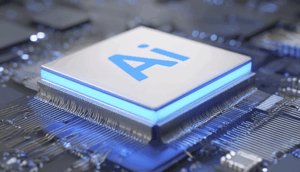CC-Link IE is a high-speed, deterministic industrial network protocol designed for demanding real-time control applications. It distinguishes itself from other industrial Ethernet solutions through its robust architecture, prioritized communication mechanisms, and comprehensive diagnostics. This technology is crucial for achieving precise synchronization and coordinated motion in automated systems, significantly enhancing productivity and efficiency across diverse industries.
The key to CC-Link IE’s real-time capabilities lies in its time-critical communication mechanisms. It leverages a token-passing scheme combined with time-division multiple access (TDMA). This ensures that each device on the network has a guaranteed time slot for transmitting data. The network master controls the token, granting access to each device in a predefined sequence. This eliminates the random access collisions that can occur in standard Ethernet networks, leading to unpredictable delays and jitter. Furthermore, CC-Link IE supports both cyclic and transient data transmission. Cyclic data, such as sensor readings and actuator commands, is transmitted at regular intervals, ensuring consistent and predictable performance. Transient data, such as alarms and event notifications, is transmitted as needed, without disrupting the cyclic communication.
Beyond the basic network protocol, CC-Link IE also incorporates advanced diagnostic features that contribute to its reliability and maintainability. The network constantly monitors the status of each device, detecting errors and faults in real-time. Detailed diagnostic information, including error codes and timestamps, is provided to the system operator, allowing for rapid troubleshooting and repair. This minimizes downtime and prevents costly production disruptions. Furthermore, CC-Link IE supports redundant network configurations, ensuring continued operation even in the event of a network failure. Redundant cables and network controllers provide backup paths for data transmission, maintaining connectivity and preventing data loss.

Implementing CC-Link IE requires careful consideration of various factors, including network topology, cable selection, and device configuration. The network topology should be designed to minimize cable lengths and ensure optimal signal integrity. Shielded twisted-pair cables are recommended to reduce electromagnetic interference (EMI) and ensure reliable data transmission. Proper grounding is also essential to prevent ground loops and minimize noise. Device configuration involves assigning unique IP addresses to each device and configuring the communication parameters, such as the cycle time and the data transmission rate. Thorough testing and validation are crucial to ensure that the network meets the performance requirements of the application.

CC-Link IE provides a robust and reliable platform for real-time control in industrial automation. Its deterministic communication mechanisms, advanced diagnostic features, and support for redundant network configurations ensure consistent performance and minimize downtime. By carefully planning and implementing CC-Link IE networks, manufacturers can achieve precise synchronization, coordinated motion, and enhanced productivity in their automated systems. As industrial automation continues to evolve, CC-Link IE remains a vital technology for enabling the next generation of smart factories and intelligent manufacturing processes. Its continuous development and adaptation to emerging technologies ensure its long-term viability as a leading industrial network protocol.